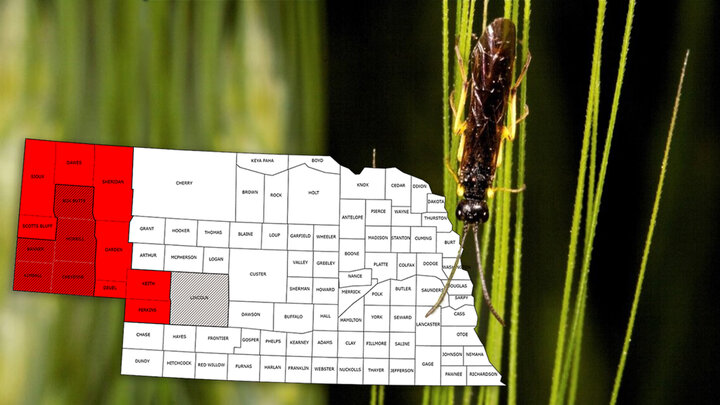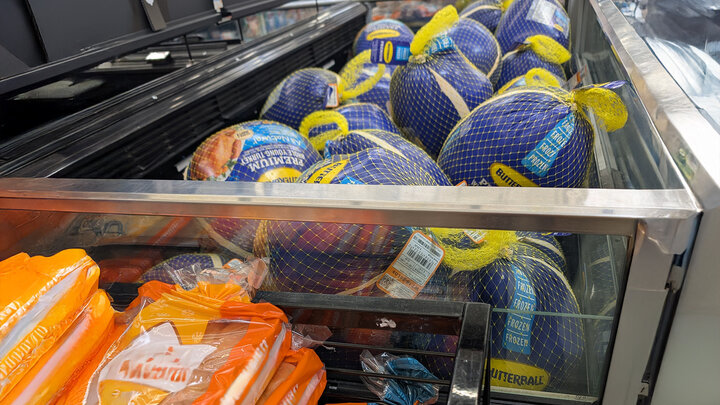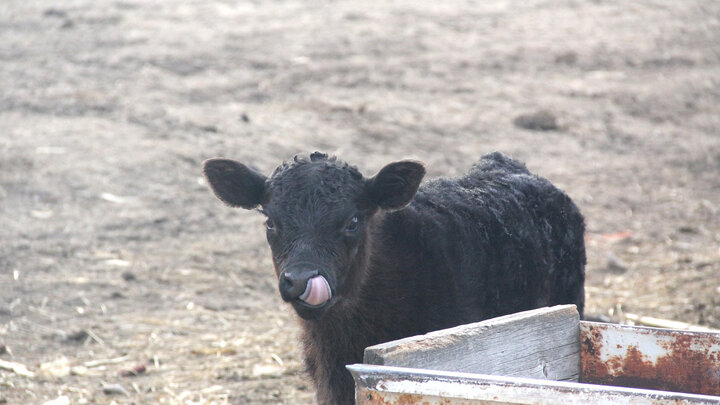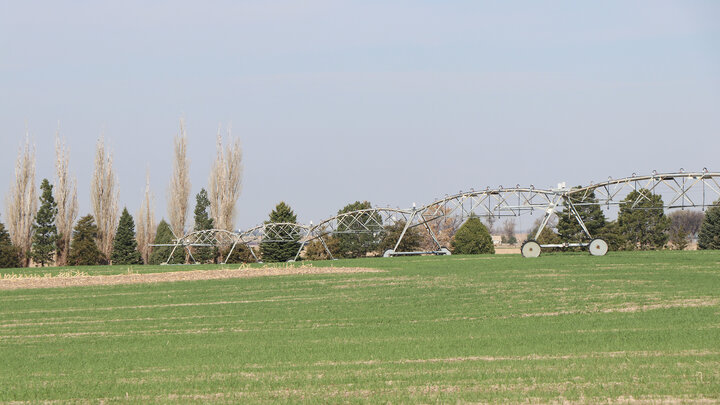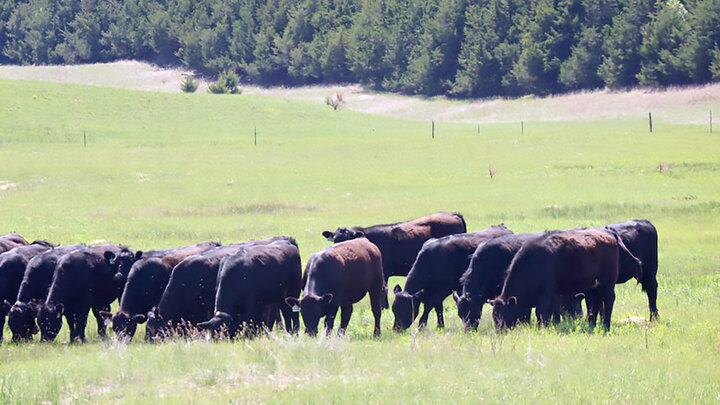Wheat stem sawfly (WSS) has once again challenged wheat growers across western Nebraska in 2025, with reports ranging from mild infestations to severe lodging.
This season’s monitoring has detected WSS activity primarily in the Nebraska Panhandle and south-central counties, with emergence occurring in early to mid-May for most of the sampled locations. In Banner and Box Butte counties, growers reported heavier stem cutting and lodging in fields where harvest was slightly delayed due to weather conditions.
Because it is difficult to pinpoint when WSS adults will emerge, growers need a reliable tool to anticipate emergence activity. Using a model based on growing degree days (GDD) provides that prediction, helping identify when conditions are favorable for WSS emergence and guiding scouting efforts and decisions.
To better anticipate adult WSS activity, we used a generalized additive model (GAM) based on sweep net captures from 2022–2025 at the High Plains Agricultural Laboratory. For the Panhandle region, this model predicts that WSS flight typically starts around 171 GDD, peaks at 281 GDD, and ends by 429 GDD. These estimates matched field observations taken from the past four years — for example, 50 percent of sawflies had emerged by 271 GDD, and 95 percent by 355 GDD.
This model was adapted from a study published by CSU earlier this year (Vieira et al., 2025).
How to estimate GDD for your field:
- Open the new USPest.org GDD tool.
- On the Station tab, select the weather station closest to your field.
- On the Model tab, enter these settings:
- Model category: Insects
- Model: Degree-day calculator (general purpose)
- Calculation method: Single sine
- Lower threshold: 10°C
- Upper threshold: 30°C
- To switch between °F and °C, use the temperature scale dropdown under Options
- Dates: Start date Jan. 1 and end date Dec. 31 for the year of interest.
- Click the Output tab to view results. Daily cumulative GDD appears in the sixth column, under DDs cumu. When cumulative GDD passes 170, begin scouting your wheat for adult WSS.
As GDD approaches the expected WSS emergence window, begin scouting fields using an insect sweep net to check for adults. About two to three weeks after WSS emergence, you can also start looking for parasitoids.
While we currently do not have established threshold numbers that directly correlate WSS counts to yield losses, simply knowing when WSS adults are present is an important first step. Detecting parasitoids in the field is also a positive sign, indicating natural biological control activity that may improve harvest conditions.
Understanding when wheat stem sawfly is active is critical for timely harvest planning and management. The GDD-based emergence model described here provides a practical, accessible tool to guide scouting and decision-making. As monitoring continues across Nebraska, the model will be updated to remain an important resource for understanding this pest, supporting biological control efforts, and helping growers make informed decisions.
For additional information and support, local extension educators are an excellent first-line resource. They can help growers use the GDD-based emergence model, identify WSS or Bracon specimens, and develop strategies to address WSS concerns in your wheat production systems.
